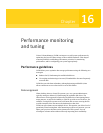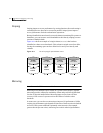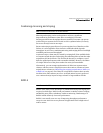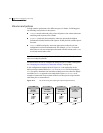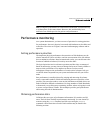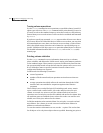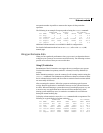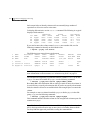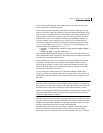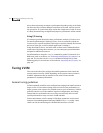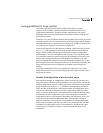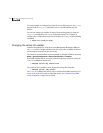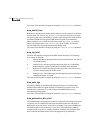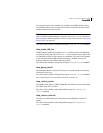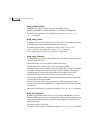
471Performance monitoring and tuning
Performance monitoring
If two volumes (other than the root volume) on the same disk are busy, move
them so that each is on a different disk.
If one volume is particularly busy (especially if it has unusually large average
read or write times), stripe the volume (or split the volume into multiple pieces,
with each piece on a different disk). If done online, converting a volume to use
striping requires sufficient free space to store an extra copy of the volume. If
sufficient free space is not available, a backup copy can be made instead. To
convert a volume, create a striped plex as a mirror of the volume and then
remove the old plex. For example, the following commands stripe the volume
archive across disks mydg02, mydg03, and mydg04 in the disk group, mydg,
and then remove the original plex archive-01:
# vxassist -g mydg mirror archive layout=stripe mydg02 mydg03 \
mydg04
# vxplex -g mydg -o rm dis archive-01
After reorganizing any particularly busy volumes, check the disk statistics. If
some volumes have been reorganized, clear statistics first and then accumulate
statistics for a reasonable period of time.
If some disks appear to be excessively busy (or have particularly long read or
write times), you may want to reconfigure some volumes. If there are two
relatively busy volumes on a disk, move them closer together to reduce seek
times on the disk. If there are too many relatively busy volumes on one disk,
move them to a disk that is less busy.
Use I/O tracing (or subdisk statistics) to determine whether volumes have
excessive activity in particular regions of the volume. If the active regions can
be identified, split the subdisks in the volume and move those regions to a less
busy disk.
Caution: Striping a volume, or splitting a volume across multiple disks, increases
the chance that a disk failure results in failure of that volume. For example, if
five volumes are striped across the same five disks, then failure of any one of the
five disks requires that all five volumes be restored from a backup. If each
volume were on a separate disk, only one volume would need to be restored. Use
mirroring or RAID-5 to reduce the chance that a single disk failure results in
failure of a large number of volumes.
Note that file systems and databases typically shift their use of allocated space
over time, so this position-specific information on a volume is often not useful.
Databases are reasonable candidates for moving to non-busy disks if the space
used by a particularly busy index or table can be identified.
Examining the ratio of reads to writes helps to identify volumes that can be
mirrored to improve their performance. If the read-to-write ratio is high,
mirroring can increase performance as well as reliability. The ratio of reads to



